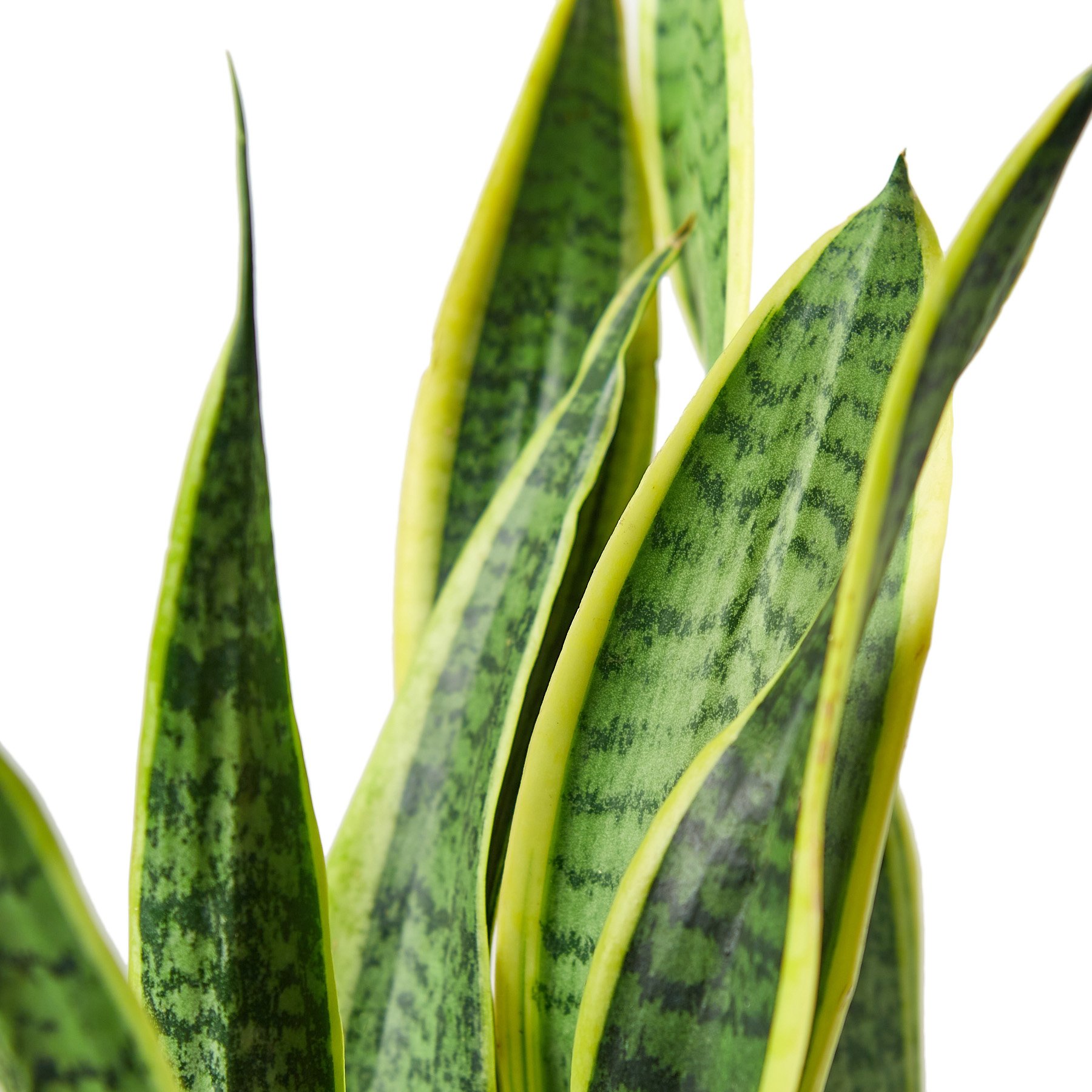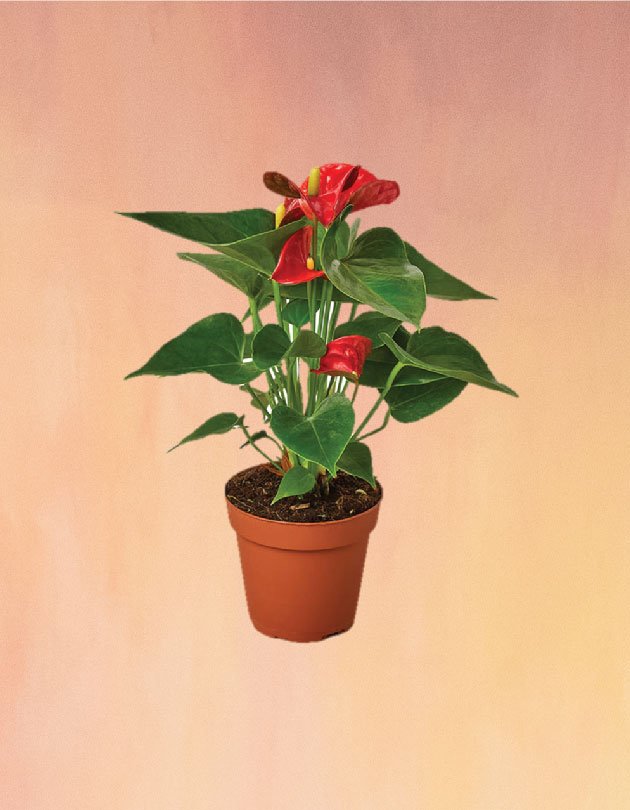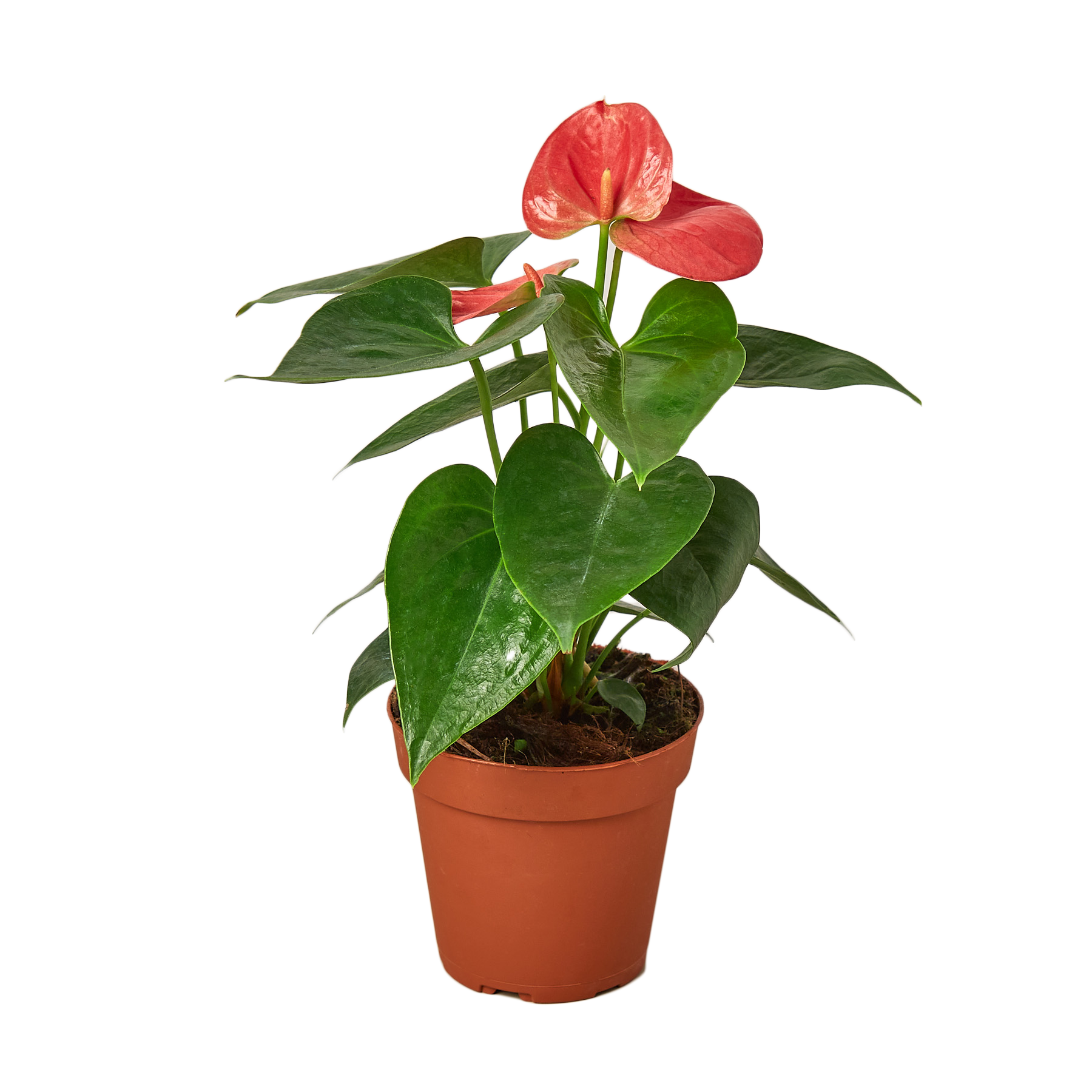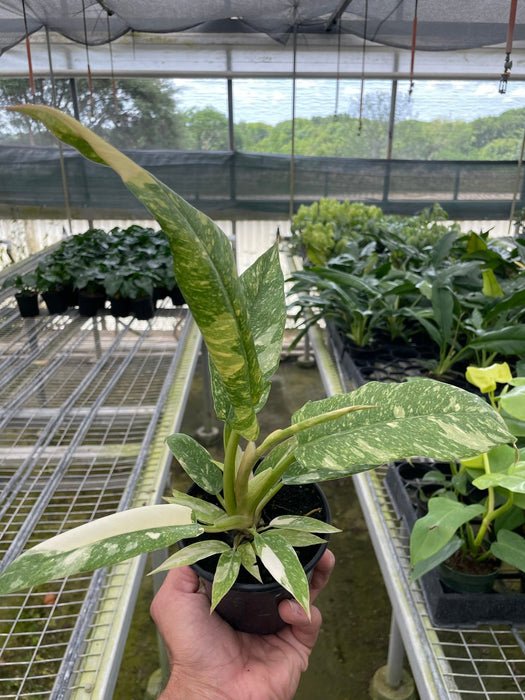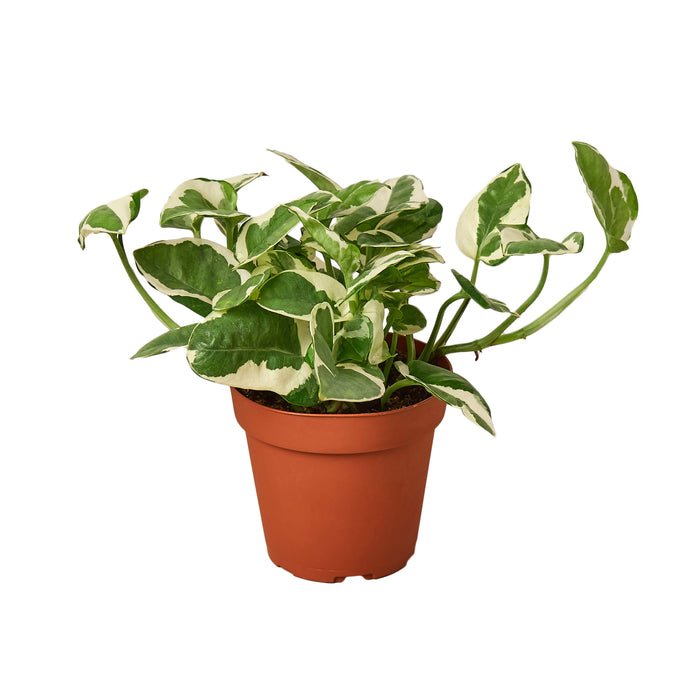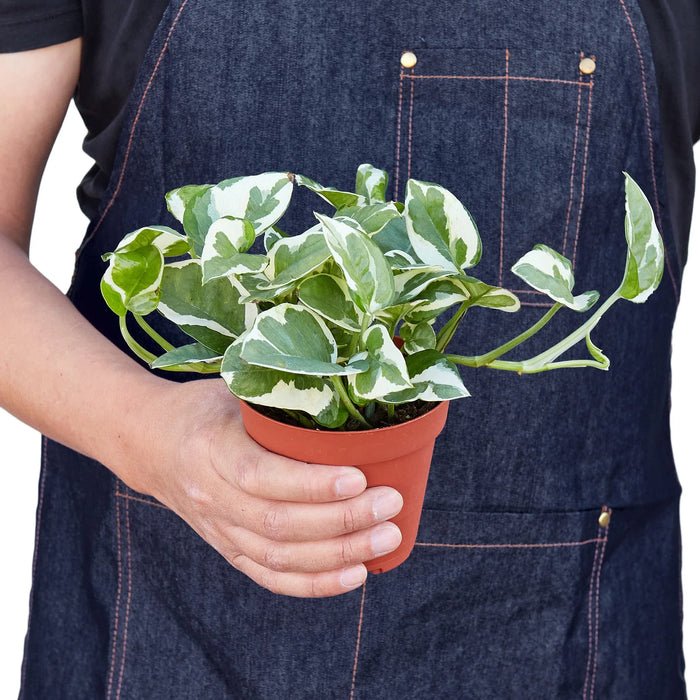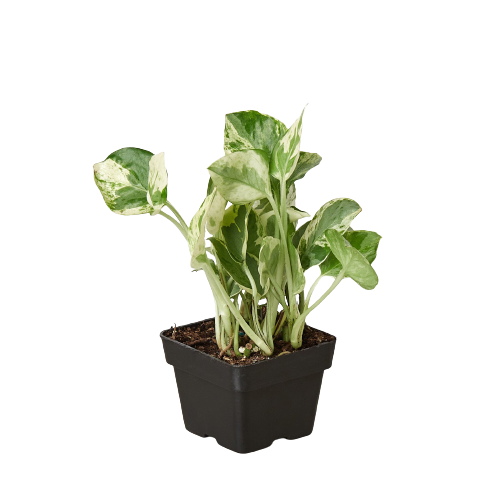Sansevieria Snake Plant 'Laurentii' Houseplant
Sansevieria Snake Plant 'Laurentii' Houseplant — boasts striking variegated leaves with vibrant yellow margins, creating a visually appealing and resilient houseplant. With its low-maintenance nature, this plant thrives in indirect light and is an ideal choice to place in low-light areas, making it a versatile and stylish addition to any home.
Botanical Classification: Sansevieria
Common Name: Snake plant, Zeylanica, Mother-in-law's tongue
CARE GUIDE:
Light.The Snake Plant is adaptable to various light levels, with growth accelerating in brighter conditions. When transitioning from indirect to direct light, it's recommended to acclimate the plant gradually over a few weeks to prevent foliage scorching.
Water.Only water the plant when the soil is completely dry, leaning towards a drier approach. Ensure thorough watering to promote a robust root system, and remove any surplus water collected in the saucer.
Humidity. The Sansevieria thrives in a dry environment and doesn't require misting.
Toxicity. Toxic to pets and humans.
Additional Care. Snake Plants reproduce by growing new plants (or ‘‘pups’’) near the base of the mother plant. To propagate your Snake Plant, carefully remove the leaves and stems of each pup once they become a few inches tall and plant them into a new pot.
Sansevieria Snake Plant 'Laurentii' Houseplant — boasts striking variegated leaves with vibrant yellow margins, creating a visually appealing and resilient houseplant. With its low-maintenance nature, this plant thrives in indirect light and is an ideal choice to place in low-light areas, making it a versatile and stylish addition to any home.
Botanical Classification: Sansevieria
Common Name: Snake plant, Zeylanica, Mother-in-law's tongue
CARE GUIDE:
Light.The Snake Plant is adaptable to various light levels, with growth accelerating in brighter conditions. When transitioning from indirect to direct light, it's recommended to acclimate the plant gradually over a few weeks to prevent foliage scorching.
Water.Only water the plant when the soil is completely dry, leaning towards a drier approach. Ensure thorough watering to promote a robust root system, and remove any surplus water collected in the saucer.
Humidity. The Sansevieria thrives in a dry environment and doesn't require misting.
Toxicity. Toxic to pets and humans.
Additional Care. Snake Plants reproduce by growing new plants (or ‘‘pups’’) near the base of the mother plant. To propagate your Snake Plant, carefully remove the leaves and stems of each pup once they become a few inches tall and plant them into a new pot.
Sansevieria Snake Plant 'Laurentii' Houseplant — boasts striking variegated leaves with vibrant yellow margins, creating a visually appealing and resilient houseplant. With its low-maintenance nature, this plant thrives in indirect light and is an ideal choice to place in low-light areas, making it a versatile and stylish addition to any home.
Botanical Classification: Sansevieria
Common Name: Snake plant, Zeylanica, Mother-in-law's tongue
CARE GUIDE:
Light.The Snake Plant is adaptable to various light levels, with growth accelerating in brighter conditions. When transitioning from indirect to direct light, it's recommended to acclimate the plant gradually over a few weeks to prevent foliage scorching.
Water.Only water the plant when the soil is completely dry, leaning towards a drier approach. Ensure thorough watering to promote a robust root system, and remove any surplus water collected in the saucer.
Humidity. The Sansevieria thrives in a dry environment and doesn't require misting.
Toxicity. Toxic to pets and humans.
Additional Care. Snake Plants reproduce by growing new plants (or ‘‘pups’’) near the base of the mother plant. To propagate your Snake Plant, carefully remove the leaves and stems of each pup once they become a few inches tall and plant them into a new pot.





